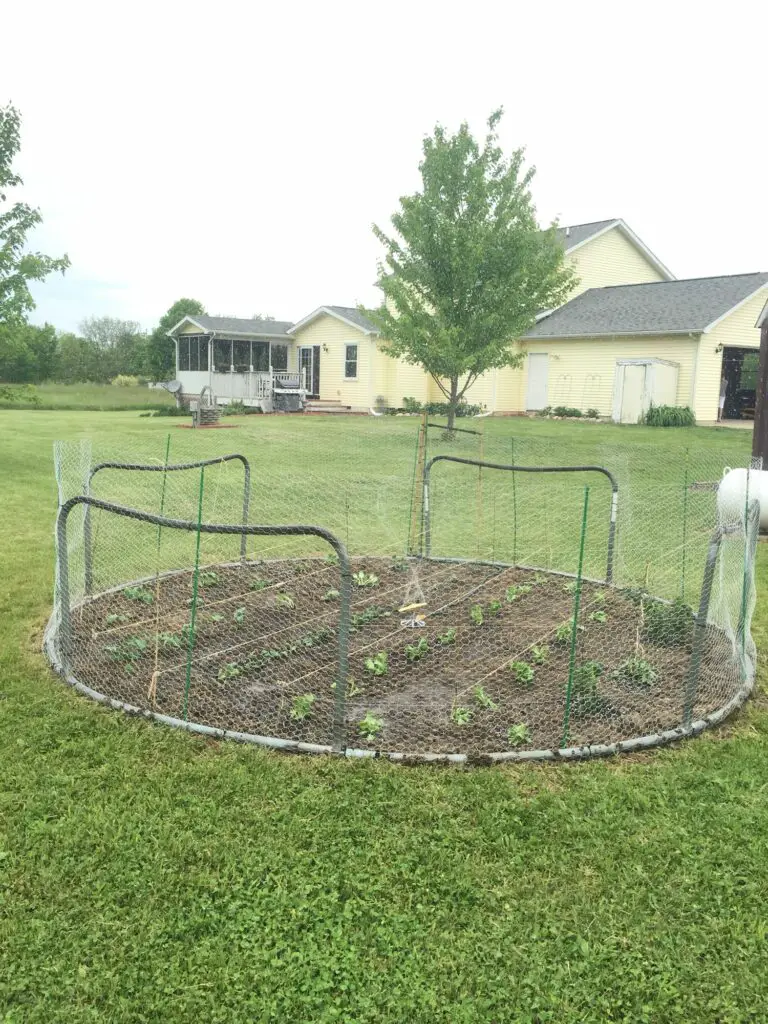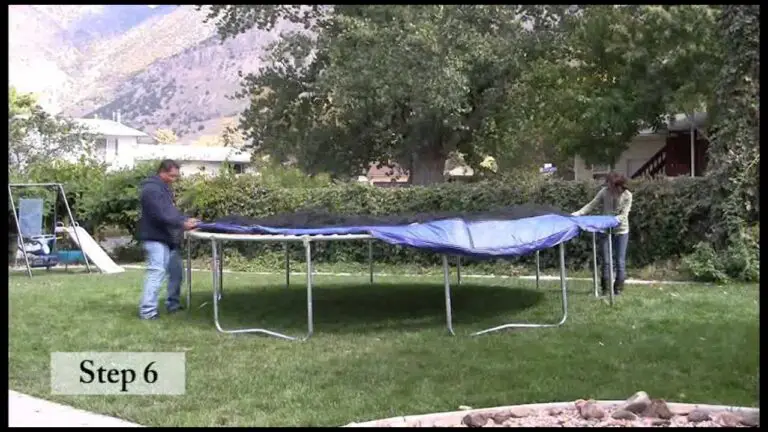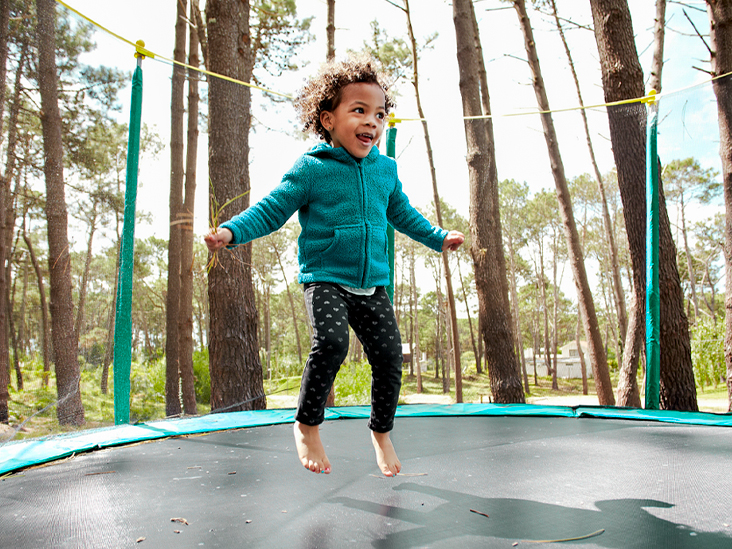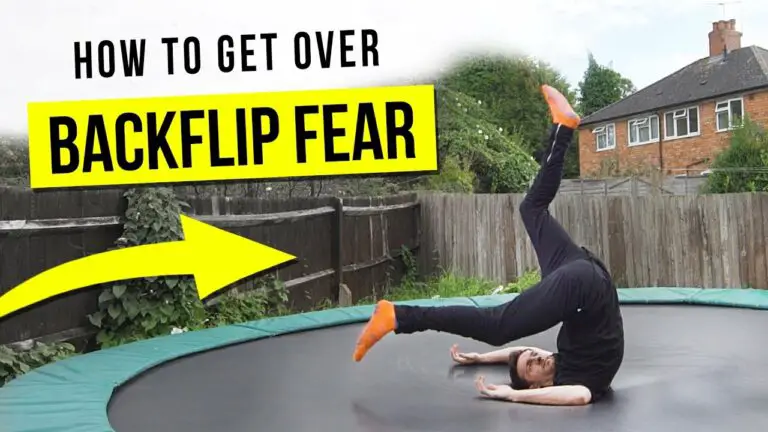Selecting a trampoline for your backyard or recreational area, finding the right size is crucial for a safe and enjoyable experience. With various trampoline sizes available on the market, it’s important to understand your specific needs and considerations before making a purchase. This article serves as a definitive guide to help you determine the ideal trampoline size for your requirements.
In this guide, we will explore the key factors that influence trampoline size selection, including available space, intended usage, and user age and weight. We will provide an overview of the common trampoline sizes typically available, ranging from compact options for single users to larger models suitable for multiple jumpers. Additionally, we will discuss the safety considerations associated with trampoline sizing, such as enclosure requirements and weight capacity limitations.
Understanding the importance of trampoline dimensions and their impact on safety and performance will empower you to make an informed decision. By considering the factors outlined in this guide, you can confidently select the right trampoline size that accommodates your available space, usage preferences, and intended users.
Let’s explore the various aspects of trampoline sizing to ensure a well-informed and enjoyable trampolining experience.
Understanding Trampoline Sizes
When it comes to trampolines, understanding the different sizes available is crucial in determining the right fit for your needs. Trampolines come in various sizes, ranging from small to medium and large. Each size offers unique benefits and considerations. Let’s take a closer look at the different types of trampoline sizes:
Small Trampolines
Small trampolines are typically compact in size and are ideal for individuals with limited space or those looking for a trampoline for personal use. These trampolines usually have a diameter of around 8 to 10 feet. They are suitable for small yards or indoor setups, making them a popular choice for fitness enthusiasts or individuals living in urban areas with limited outdoor space.
Small trampolines, also known as mini trampolines or rebounders, offer a range of health benefits. Jumping on a small trampoline can help improve cardiovascular health, balance, coordination, and overall fitness. These trampolines are often used for low-impact exercises, rehabilitation purposes, or as a fun way to stay active at home.
Medium Trampolines
Medium-sized trampolines strike a balance between space requirements and jumping area. They are a popular choice for families and individuals who have a moderately-sized backyard. Medium trampolines typically have a diameter of around 10 to 12 feet, providing ample jumping space for children and adults alike.
These trampolines offer versatility, allowing multiple users to enjoy jumping without feeling cramped. They are great for recreational use, backyard parties, or family fun. Medium trampolines provide enough room for basic tricks and movements while maintaining a manageable size that fits most outdoor spaces.
Large Trampolines
For those with spacious yards or a desire for an extensive jumping area, large trampolines are the go-to choice. These trampolines often have a diameter of 14 feet or more, offering a generous jumping surface for multiple users simultaneously. They are perfect trampoline for families, gatherings, or those who want to engage in advanced trampoline tricks and stunts.
Large trampolines provide plenty of space to perform acrobatics, flips, and more dynamic movements. The increased size allows for a greater sense of freedom while jumping and reduces the chances of collision between jumpers. However, it’s essential to ensure that your yard can accommodate the dimensions of a large trampoline comfortably.
Remember, the choice between small, medium, or large trampolines depends on your available space, the number of users, and your specific preferences. Consider the size of your yard, the intended usage of the trampoline, and the age group of the users to determine the ideal size of trampoline that suits your needs.
In the next section, we’ll explore the steps involved in choosing the right trampoline size, including measuring your yard and considering factors that influence your decision-making process.
Steps to Choosing the Right Trampoline Size
Choosing the right trampoline size is crucial to ensure an enjoyable and safe experience for users of all ages. In this section, we will outline the steps you should follow to determine the ideal trampoline size for your needs. By measuring your yard, considering the users, and taking other important factors into account, you can make an informed decision that will provide maximum fun and functionality.
Step-1: Measure Your Yard
Before purchasing a trampoline, it’s essential to measure your yard to determine the available space. By accurately measuring the area, you can ensure that the trampoline fits properly and that there is enough room for safe jumping and movement.
How to Measure for a Trampoline
To measure your yard for a trampoline, follow these simple steps:
- Prepare the area: Clear any obstacles or debris from the yard to get an accurate measurement. This includes removing rocks, branches, or any other objects that may interfere with the trampoline’s placement.
- Use a measuring tape: Start by measuring the width and length of the space where you plan to set up the trampoline. Measure from one side to the other, ensuring that the tape is straight and taut.
- Consider clearance: In addition to the trampoline’s dimensions, you should also account for the recommended clearance space around it. This clearance space is necessary to ensure the safety of the jumpers and prevent any potential accidents. As mentioned in the key points, Springfree recommends a clearance of 1.5 meters (5 feet) on all sides of the trampoline.
- Calculate the required space: Add the clearance measurements to the trampoline dimensions to determine the total space needed. For example, if you are considering a 10ft trampoline and the recommended clearance is 1.5 meters on each side, you would add 3 meters (10ft) to the overall dimensions.
Taking accurate measurements and considering the clearance space will help you choose a trampoline size that fits comfortably in your yard without any restrictions.
Step-2: Consider Who Will Be Using the Trampoline
When determining the right trampoline size, it’s crucial to consider the individuals who will be using it. Different age groups and skill levels require varying amounts of space to ensure a safe and enjoyable experience.
For example, if you’re buying a trampoline for a 10-year-old, you need to consider their height, weight, and level of expertise. A trampoline that is too small may restrict their movements, while a trampoline that is too large may be overwhelming or unsafe for their size.
Furthermore, if yo^u have multiple family members or friends who will be using the trampoline, it’s important to ensure that the chosen size can accommodate everyone comfortably. Larger trampolines can provide more room for multiple jumpers and reduce the risk of collisions.
By considering the age, size, and skill level of the users, you can select a trampoline size that caters to their specific needs and provides a safe and enjoyable jumping experience for all.
Step-3: Take Other Factors into Account
In addition to measuring your yard and considering the users, there are several other factors that should be taken into account when choosing the right trampoline size. These factors can further enhance the safety, functionality, and overall experience of using a trampoline.
- Available space: Apart from the yard measurements, consider the available space you have for the trampoline in terms of the layout of your backyard. Are there any existing structures, trees, or obstacles that could affect the placement of the trampoline? Ensuring a clear and open area for the trampoline is essential for safe jumping.
- Weight limits: Trampolines come with weight limits that specify the maximum weight capacity they can safely support. It’s important to choose a trampoline that can accommodate the weight of the intended users. Exceeding the weight limit can compromise the trampoline’s structural integrity and pose a safety risk.
- Safety features: Consider the safety features offered by different trampolines, such as enclosure nets, padding, and sturdy frames. These features contribute to the overall safety of the trampoline and can help prevent injuries during jumping sessions.
- Budget: Trampoline prices can vary depending on the size and brand. It’s important to set a budget and choose a trampoline size that fits within your financial constraints. Remember to prioritize quality and safety when making your purchase.
By considering these additional factors, you can make an informed decision and choose a trampoline size that aligns with your yard space, user requirements, and overall preferences.
In the next section, we will explore the factors that can incflence your decission for making the right call when determining the best size trampoline for you.
Factors Influencing Trampoline Size Choice
Choosing the right trampoline size involves considering various factors that can influence your decision. These factors include the size and shape of your garden, the number and age of children using the trampoline, and your budget considerations. Let’s explore each of these factors in more detail.
Garden Size and Shape
When determining the appropriate trampoline size for your garden, it’s essential to assess the available space and shape of your outdoor area. The size of your garden will directly impact the maximum dimensions of the trampoline you can accommodate.
To choose the right size based on your garden, measure the area where you plan to place the trampoline. Ensure you have enough space for the trampoline’s diameter or length, taking into account any safety clearance required around it. It’s important to leave sufficient room for jumpers to land safely and move around the trampoline without any obstructions.
Consider the shape of your garden as well. If you have a narrow and elongated garden, a rectangular trampoline might be a better fit. Rectangular trampolines can make more efficient use of space and are ideal for narrower areas. On the other hand, if you have a spacious and open garden, a round or oval trampoline may be a suitable choice.
By carefully assessing the size and shape of your garden, you can select a trampoline that fits harmoniously within your outdoor space, providing an enjoyable jumping experience for users.
Table: Recommended Trampoline Sizes Based on Garden Size
| Garden Size | Recommended Trampoline Size |
|---|---|
| Small Garden | 8ft or 10ft trampoline |
| Medium Garden | 12ft trampoline |
| Large Garden | 14ft trampoline or 15ft trampoline |
Number of Children Using the Trampoline
Another crucial factor to consider when determining the trampoline size is the number of children who will be using it. Trampolines come with weight limits and surface areas designed to accommodate a certain number of jumpers simultaneously.
If you have multiple children or if your children often invite friends over to play, opting for a larger trampoline would be beneficial. A larger trampoline provides more jumping space and reduces the risk of collisions between users. It allows children to have fun together while ensuring everyone has enough room to perform various tricks and movements safely.
Consider the age and size of the children using the trampoline as well. Older and bigger children may require more space to jump comfortably. Additionally, if you have a wide age range among the users, it’s advisable to choose a trampoline size that can accommodate the largest and heaviest jumper.
Table: Recommended Trampoline Sizes for Different Numbers of Children
| Number of Children | Recommended Trampoline Size |
|---|---|
| 1-2 | 8ft or 10ft trampoline |
| 2-3 | 12ft trampoline |
| 3 or more | 14ft or 15ft trampoline |
Age of Children Using the Trampoline
The age of the children using the trampoline is another important factor in determining the appropriate size. Different age groups have varying needs and capabilities when it comes to trampoline usage.
For younger children, such as toddlers and preschoolers, smaller trampolines are often recommended. These trampolines typically have a handle for added stability and safety, allowing young jumpers to develop coordination and balance while minimizing the risk of falls. A 6ft trampoline or a toddler trampoline with a handle would be suitable options for this age group.
As children grow older, they may require a larger trampoline to accommodate their increasing size and skill level. Teenagers and adults generally prefer larger trampolines that offer ample space for more dynamic movements and tricks.
Table: Trampoline Sizes for Different Age Groups
| Age Group | Recommended Trampoline Size |
|---|---|
| Toddler (1-3) | 6ft trampoline with handle |
| Young Children (4-8) | 8ft or 10ft trampoline |
| Older Children (9-12) | 12ft trampoline |
| Teenagers and Adults | 14ft or 15ft trampoline |
Budget Considerations
Budget considerations play a role in the trampoline size selection process. Trampoline prices can vary based on factors such as size, quality, and additional features.
Smaller trampolines, such as 8ft or 10ft ones, tend to be more affordable compared to larger sizes. If you have a limited budget, these smaller trampolines can still provide a great jumping experience for children and even some adults.
However, if your budget allows, investing in a larger trampoline can offer more room for growth and enjoyment over time. It’s important to strike a balance between your budget and the size of the trampoline that best suits your needs.
Table: Price Range for Different Trampoline Sizes
| Trampoline Size | Price Range |
|---|---|
| 8ft or 10ft | $200-$400 |
| 12ft | $300-$600 |
| 14ft or 15ft | $500 and above |
By considering your budget, you can find a trampoline size that meets your financial constraints while still providing a safe and enjoyable jumping experience for the users.
In the next section, we will delve into the most used Trampoline sizes and what features they provide.
Popular Trampoline Sizes and Their Features
Trampolines come in various shapes and sizes to suit different preferences and needs. In this section, we will explore the popular size of the trampoline and their unique features. Whether you are considering a round, rectangular, oval, or square trampoline, understanding their characteristics will help you make an informed decision.
Round Trampoline Sizes
Round trampolines are the most common and widely available type of trampolines. They are known for their balanced bounce and suitability for various users, including children, teenagers, and adults. Here are some popular round trampoline sizes and their features:
| Trampoline Size | Ideal For | Space Required | Capacity |
|---|---|---|---|
| 10ft | Smaller yards | Requires approximately 3.1m of space | Fits 1 adult or 2 young kids |
| 12ft | All ages | Requires approximately 3.7m of space | Fits 2 adults or 3 young kids |
| 14ft | Large lawns, trick enthusiasts | Requires approximately 4.2m of space | Fits 3 adults or 4 young kids |
Round trampolines offer a good balance between size and functionality. They are suitable for different age groups and can accommodate multiple users simultaneously. When choosing a round trampoline, consider the available space in your yard and the number of individuals who will be using it.
Rectangular Trampoline Sizes
Rectangular trampolines, also known as gymnasts’ trampolines, are favored by athletes and those seeking a higher bounce. They provide a larger jumping surface and are commonly used for gymnastics or acrobatic training. Here are some popular rectangular trampoline sizes:
| Trampoline Size | Ideal For | Space Required | Capacity |
|---|---|---|---|
| 7x10ft | Limited outdoor space, smaller yards | Requires approximately 2.1m x 3m of space | Fits 1-2 users |
| 8x12ft | All ages, slightly larger yards | Requires approximately 2.4m x 3.7m of space | Fits 2-3 users |
| 9x14ft | Larger yards, more advanced tricks | Requires approximately 2.7m x 4.2m of space | Fits 3-4 users |
| 10x17ft | Spacious areas, advanced users | Requires approximately 3m x 5.2m of space | Fits 4-5 users |
Rectangular trampolines provide a greater bounce due to their design. They are often preferred by athletes and individuals looking to perform complex maneuvers. When considering a rectangular trampoline, ensure that you have enough space to accommodate its dimensions.
Oval Trampoline Sizes
Oval trampolines combine elements of both round and rectangular trampolines. They offer a larger jumping area compared to round trampolines while maintaining a balanced bounce. Oval trampolines are suitable for various age groups and can be a great option for families. Although less common than round or rectangular trampolines, they provide a unique shape and appeal. While specific sizes may vary, oval trampolines typically range from 8x12ft to 10x17ft.
Square Trampoline Sizes
Square trampolines provide a symmetrical jumping surface and are known for their consistent bounce. They are popular among those who enjoy recreational jumping and fitness activities. Square trampolines are available in different sizes, including 8ft, 10ft, and larger options. They offer a compact footprint, making them suitable for smaller yards or areas with limited space.
When choosing a trampoline size, consider the age and skill level of the users, the available space in your yard, and the intended purpose of the trampoline. Whether you opt for a round, rectangular, oval, or square trampoline, selecting the appropriate size will ensure an enjoyable and safe bouncing experience.
Final Words
The appropriate size of a trampoline is determined by considering factors such as available space, intended usage, and the number and age of users. It is important to measure the available area and select a trampoline that fits comfortably within that space, ensuring there is enough clearance around it for safe jumping. Additionally, considering the primary users’ age and skill level helps determine the appropriate diameter and weight capacity of the trampoline. By considering these factors, individuals can make an informed decision and choose the right size trampoline that best suits their needs and ensures a safe and enjoyable jumping experience.





